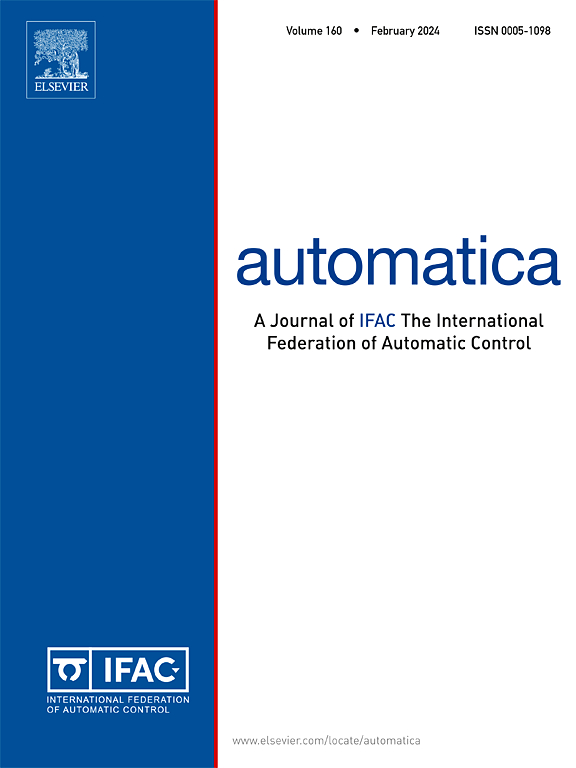Almost sure convergence of distributed optimization with imperfect information sharing
IF 5.9
2区 计算机科学
Q1 AUTOMATION & CONTROL SYSTEMS
引用次数: 0
Abstract
We study convex distributed optimization problems where a set of agents are interested in solving a separable optimization problem collaboratively with imperfect information sharing over time-varying networks. A robust algorithm is designed to reduce communication load and meet rate constraints. We study the almost sure convergence of a two-time-scale decentralized gradient descent algorithm to reach the consensus on an optimizer of the objective loss function. One time scale fades out the imperfect incoming information from neighboring agents, and the second one adjusts the local loss functions’ gradients. We show that under certain conditions on the connectivity of the underlying time-varying network and the time-scale sequences, the dynamics converge almost surely to an optimal point supported in the optimizer set of the loss function.
具有不完全信息共享的分布式优化的几乎肯定收敛性
我们研究凸分布优化问题,其中一组智能体对时变网络中具有不完全信息共享的可分离优化问题感兴趣。设计了一种鲁棒算法来降低通信负荷并满足速率约束。研究了一种双时间尺度分散梯度下降算法在目标损失函数的优化器上的几乎肯定收敛性。一个时间尺度淡出来自相邻agent的不完美输入信息,第二个时间尺度调整局部损失函数的梯度。我们证明了在一定的时变网络与时间尺度序列的连通性条件下,动态收敛几乎肯定地收敛到损失函数的优化器集中支持的最优点。
本文章由计算机程序翻译,如有差异,请以英文原文为准。
求助全文
约1分钟内获得全文
求助全文
来源期刊

Automatica
工程技术-工程:电子与电气
CiteScore
10.70
自引率
7.80%
发文量
617
审稿时长
5 months
期刊介绍:
Automatica is a leading archival publication in the field of systems and control. The field encompasses today a broad set of areas and topics, and is thriving not only within itself but also in terms of its impact on other fields, such as communications, computers, biology, energy and economics. Since its inception in 1963, Automatica has kept abreast with the evolution of the field over the years, and has emerged as a leading publication driving the trends in the field.
After being founded in 1963, Automatica became a journal of the International Federation of Automatic Control (IFAC) in 1969. It features a characteristic blend of theoretical and applied papers of archival, lasting value, reporting cutting edge research results by authors across the globe. It features articles in distinct categories, including regular, brief and survey papers, technical communiqués, correspondence items, as well as reviews on published books of interest to the readership. It occasionally publishes special issues on emerging new topics or established mature topics of interest to a broad audience.
Automatica solicits original high-quality contributions in all the categories listed above, and in all areas of systems and control interpreted in a broad sense and evolving constantly. They may be submitted directly to a subject editor or to the Editor-in-Chief if not sure about the subject area. Editorial procedures in place assure careful, fair, and prompt handling of all submitted articles. Accepted papers appear in the journal in the shortest time feasible given production time constraints.
 求助内容:
求助内容: 应助结果提醒方式:
应助结果提醒方式:


